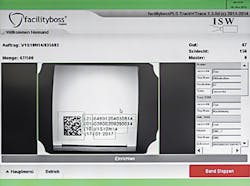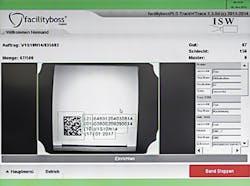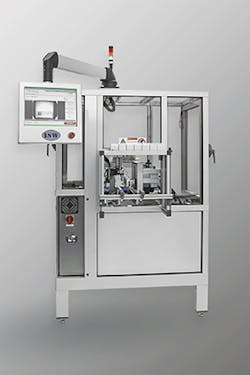Packaging and Production: Track-and-trace system ensures proper pharmaceutical packaging
Pharmaceutical vendors are being placed under increasingly stringent requirements to ensure that the products they ship can be accurately traced from the manufacturer to the customer. To do so, each carton is printed with information such as serial number, lot number, expiration date and manufacturing date before it is finally packed in individual cartons.
These cartons must also be marked with a Global Trade Item Number (GTIN) to ensure that each product is uniquely identified and can be shipped worldwide. After marking, the Data-Matrix-Code and alphanumeric information printed on each carton must be verified. To automate this process, ISW Industrielle Sensorsysteme Wichmann (ISW, Kölln-Reisiek, Germany; www.isw-gmbh.biz) has developed a system known as a Package Aggregation Line Controller unit (PALC unit) that incorporates both an in-line printer and vision system that allows up to 400 packages/minute to be printed and verified.
In operation, packages that can range in sizes from 300mm in width and 15-130mm in height are fed onto a conveyor. "By measuring the speed of the conveyor with a rotary encoder and detecting the presence of a package with a photodetector," says Tobias Wichmann, General Manager of ISW, "the position of each package at any point on the conveyor can be accurately predicted." Both the rotary encoder and photodetector are interfaced to a PLC and in-turn to an industrial computer from CRE Rösler Electronic (Hohenlockstedt, Germany; www.cre-electronic.de).
As each package passes through the system, an alphaJET Ethernet-based inkjet printer from KBA Metronic (Veitshöchheim, Germany; www.kba-metronic.com) is used to print the GTIN number onto the carton as it moves at speeds of up to 30m/min along the conveyor. After printing, the information printed on the code must be verified.
"To illuminate the packages as they pass along the conveyor," says Wichmann, "a custom-built white LED ring light was mounted in a camera housing containing a 1624 x 1236 TXG-20 Gigabit Ethernet camera from Baumer (Friedberg, Germany; www.baumer.com). By triggering this LED light for approximately 300μs using a PP550 LED strobe controller from Gardasoft (Cambridge, England; www.gardasoft.com), it was possible to generate the high-brightness illumination required to capture the packages as they move along the conveyor."
Captured images are then transferred over the camera's GigE interface to the industrial PC where the data matrix code and the OCR text are read. To do so, specific predefined regions of interest (ROIs) are first defined using HALCON from MVTec (Munich, Germany; www.mvtec.com). "Because the alphanumeric data printed on the packages results in characters that may not be machine readable," says Wichmann, "a morphological closing operator within HALCON is applied before OCR tools are used to read the code."
After reading this code, captured data is then compared with data stored in a database system known as Track'n'Trace from facilityboss (Darmstadt, Germany; www.facilityboss.biz). Should a printed code be unreadable or not match any existing codes within the database, the industrial PC in the system triggers the PLC which in turn activates a pneumatic actuator located at the end of the conveyor to reject the package.
"By following the European Community's 2011/62/EU directive" says Wichmann, "pharmaceutical manufacturers using the ISW Package Aggregation Line Controller unit (PALC unit) can ensure their products can be fully tracked and traced through the entire supply chain." To date, a variety of PALC units have been installed at a cost of between $110-130k per system.



